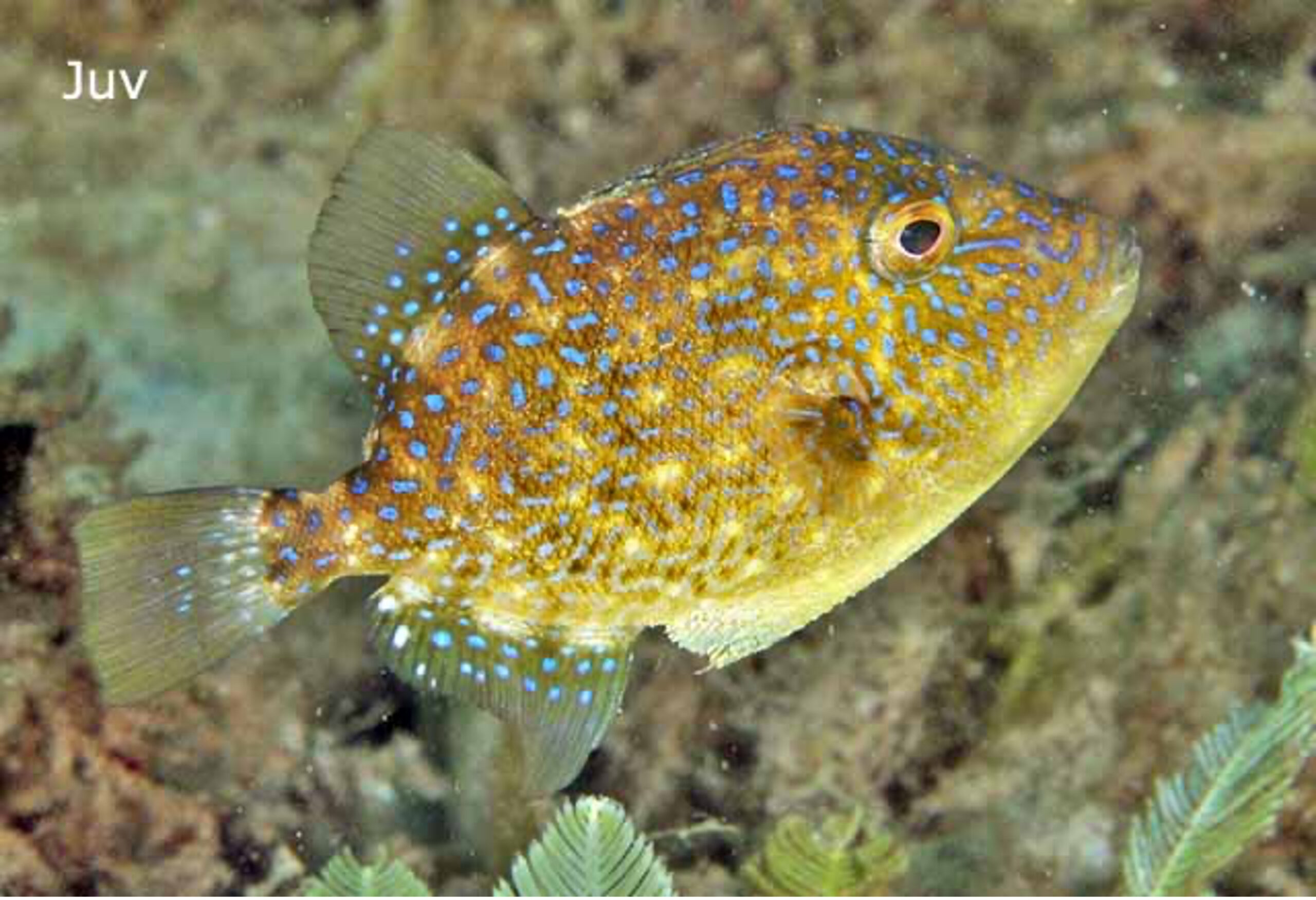August Fish of the Month: Gray Triggerfish Balistes capriscus
Dr. Geoffrey Smith
NWFSC Biology Instructor
Local offshore anglers and charter boat operators have been eagerly awaiting for August 1st, signaling the re-opening of Gray Triggerfish season. Gray Triggerfish are named for their overall drab brownish gray coloration (Figure 1) and a unique trait of their family of fishes. The triggerfishes, Balistidae, are named for their unique anti-predator first dorsal fin (top fin located on the front half of the fish). The first spine of this fin is relatively long, very thick, and sharp. Like many fish, the dorsal spines are held upright to defend against predators. What makes the triggerfishes unique, is that the much smaller third dorsal spine acts like a locking mechanism holding the first spine upright even when pressure is applied to it allowing them to lock themselves in crevices and potentially damage the mouths of predators. If you apply pressure to the smaller third spine (like pressing on a trigger), the much larger first spine can then be folded down (see this YouTube clip for a demonstration). The triggerfishes and closely related filefishare also commonly referred to as leatherjackets due to their rough leathery scales. Gray Triggerfish can be found in the western Atlantic Ocean from Nova Scotia to Argentina including the entire Gulf of Mexico, although they are most common in warm temperate to tropical waters (Figure 2). Gray Triggerfish mature at approximately 2 years of age (12-15 inches fork length)and spawn in the spring and summer (generally April to August). The larger males establish territories that they defend from other males and potential predators. Within these territories, the males build nests in the sand with their fins and court females to spawn in these nests. Males will defend up to three active nests (containing eggs) at once. The females will aerate the eggs with their fins and defend the nests against predators until the eggs hatch 1-2 day later. The tiny larvae swim towards the surface where they grow as juveniles around floating debris, especially Sargassum algae. The juveniles are similar in coloration to adults, but have iridescent blue marking on the body and fins that fade with age (Figure 3). Between 4 and 7 months of age (a few inches to about 6 inches long), the triggerfish will start to settle on the bottom of the oceanaround reefs, wrecks, and limestone outcroppings. If you plan to target this species, current regulations (https://myfwc.com/fishing/saltwater/recreational/triggerfish/) in Florida state and federal waters of the Gulf of Mexico include a 15” fork length minimum size limit and bag limit of one per person, with harvesting being prohibited from April through July and January through February.

Figure 1: Typical adult Gray Triggerfish coloration. Photo credit: Eaker Richard (https://biogeodb.stri.si.edu/caribbean).

Figure 2: Distribution of Gray Triggerfish within the Caribbean and Gulf of Mexico (https://biogeodb.stri.si.edu/caribbean).

Figure 3: Typical juvenile Gray Triggerfish coloration. Photo credit: Bryant Kevin (https://biogeodb.stri.si.edu/caribbean).



